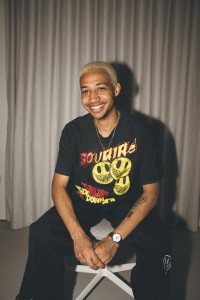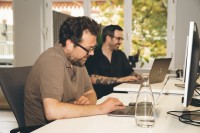Courage in Marketing: The Gap Between Aspiration and Reality
200 Zeichen Lorem ipsum dolor sit amet, consectetuer adipiscing elit. Aenean commodo ligula eget dolor. Aenean massa. Cum sociis natoque penatibus et magnis dis parturient montes, nascetur ridiculus mus. Donec quu.
Kim Notz
06. September 2024
n marketing, “courage” has become something of a buzzword. Agencies and companies increasingly talk about developing bold ideas that will revolutionize markets and captivate consumers — today, hardly a project or pitch briefing goes by without these terms. Yet in practice, the execution of these ambitions often falls short. A gap emerges between what is demanded and what is actually delivered.
Especially in uncertain times, marketers seem to aim for bold concepts — but without being willing to take the risks that true boldness requires. Instead, an unspoken maxim prevails: “Be brave, but please, be careful.” This paradox means that many supposedly daring ideas never make it past the draft stage, ultimately getting caught in the safety net of risk minimization.
With that mindset, our classic Lucky Strike campaign would never have seen the light of day — and Hornbach’s unconventional creations would never have had a chance.
The Psychology of Courage – and How It Is Often Misunderstood in Marketing
Pema Chödrön, a well-known Tibetan Buddhist nun, describes courage as “intimacy with fear.” This thought holds a deep truth: courage does not mean rushing into risks without reflection, but rather accepting the possibility of failure and acting boldly nonetheless. Yet in marketing, this idea is often misunderstood. Bold advertising is frequently demanded by clients — but at the same time, they expect every campaign to come without risk. This kind of double standard suffocates creative approaches from the very start, as the fear of failure looms over everything.
It is not only psychologically problematic to demand brave decisions from agencies while refusing to shoulder the consequences of failure oneself. It is also dishonest to treat creativity as a game of chance. In reality, successful creativity rests on a well-thought-out strategy — one that embraces risk, but does so deliberately and with calculation. Creativity is not a blind leap into the unknown; it is a structured process designed to evoke emotions and create lasting impact. As Nils Leonard aptly put it: “There is no creative bravery, only true creativity.”
Bold Collaboration – The Key to Successful Marketing
The challenge for agencies lies in mastering the balancing act between creative freedom and security. But how can this be achieved? The key is open, fearless collaboration and clear communication with clients. Fear is creativity’s greatest enemy — and therefore also the enemy of courage. Strong agencies not only understand the dynamics of their clients’ businesses, they also help them champion bold ideas internally.
Yet this requires more than just a “brave” concept. It calls for well-founded arguments, evidence, and above all, the client’s trust — to recognize the new and the unfamiliar as the right path forward.
Courage as a Strategic Approach
In an age where algorithms are becoming ever more refined, brands tend to conform to the average. But this is precisely where the danger lies: relevance alone is not enough to stand out from the crowd. If brands truly want to be exceptional, they must learn to embrace risk. That means not only being different, but being better. Courage in marketing should not be reduced to a buzzword, but understood as a conscious strategic decision — a willingness to accept uncertainty in pursuit of long-term success.
For agencies, this means having the backbone to communicate openly and honestly about what true creativity requires. It means being willing to share the risks that come with bold decisions together with their clients. Because true creativity is not about being “brave” — it is, above all, about being right.
A Case for Smart Courage
Courage in marketing must not become an overused buzzword. It has to be applied deliberately and with strategic foresight. Only those willing to step out of safe routines and consciously embrace the risks involved will achieve lasting success. What matters is not the desire for courage, but the understanding of how courage can be transformed into smart, creative strategy — and the recognition that bold ideas always carry a certain element of risk. Only then can truly exceptional advertising emerge: work that moves markets and stays in people’s minds.
Find more here:
Kontakt





